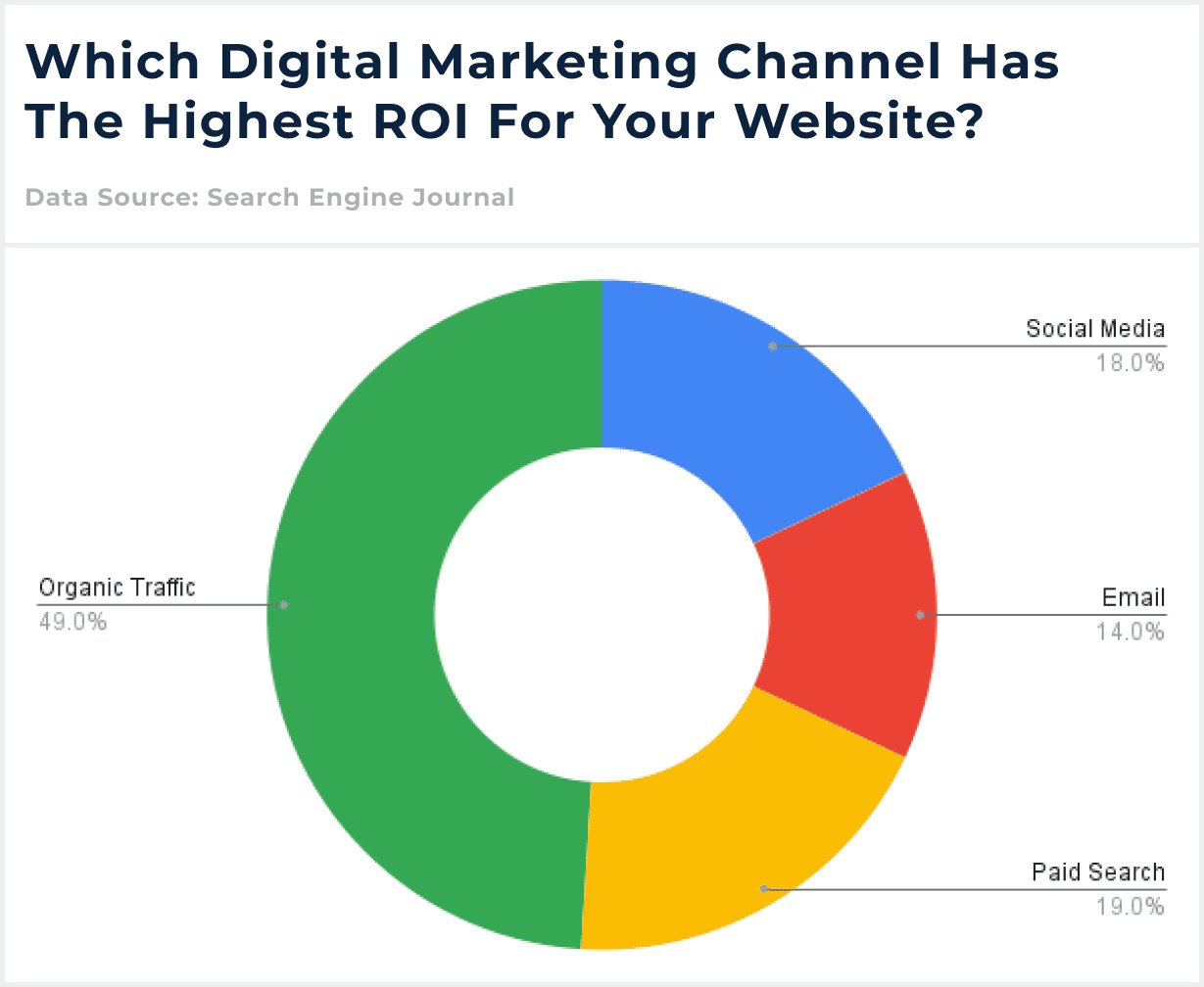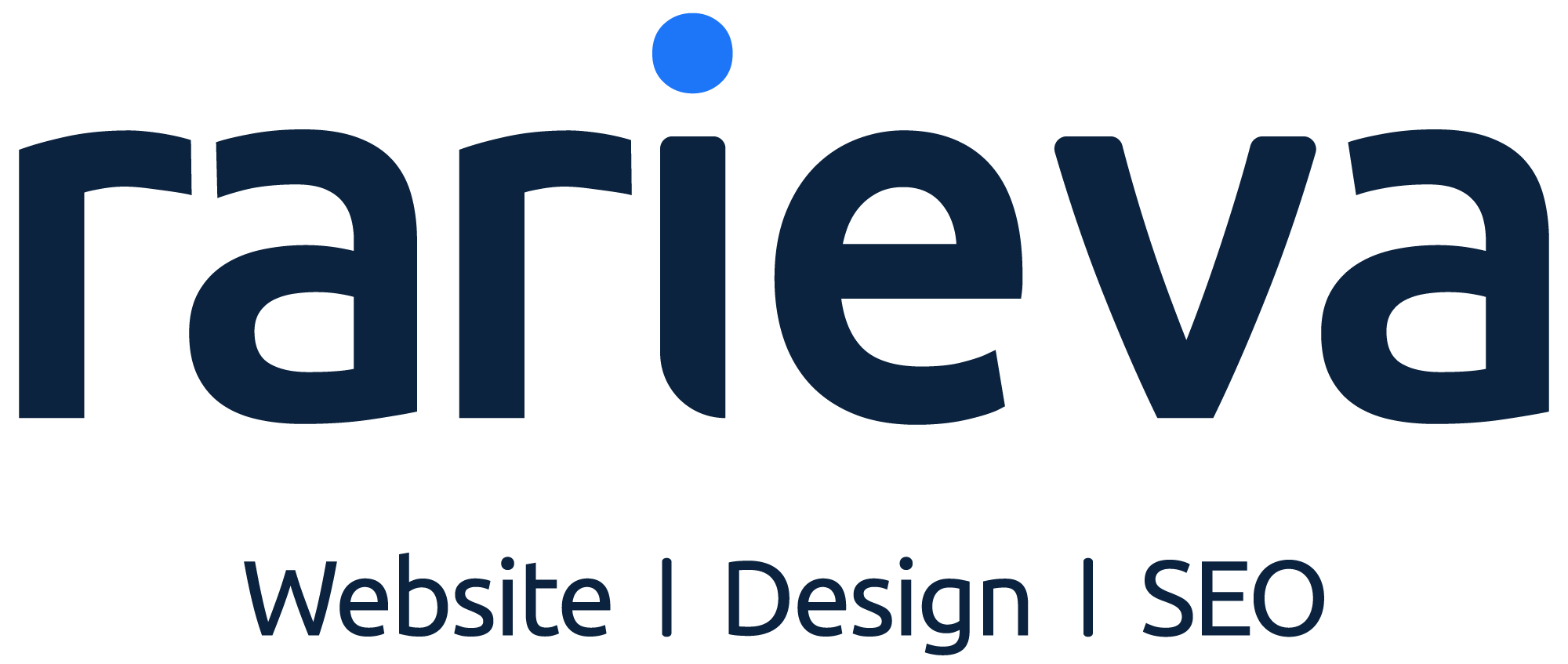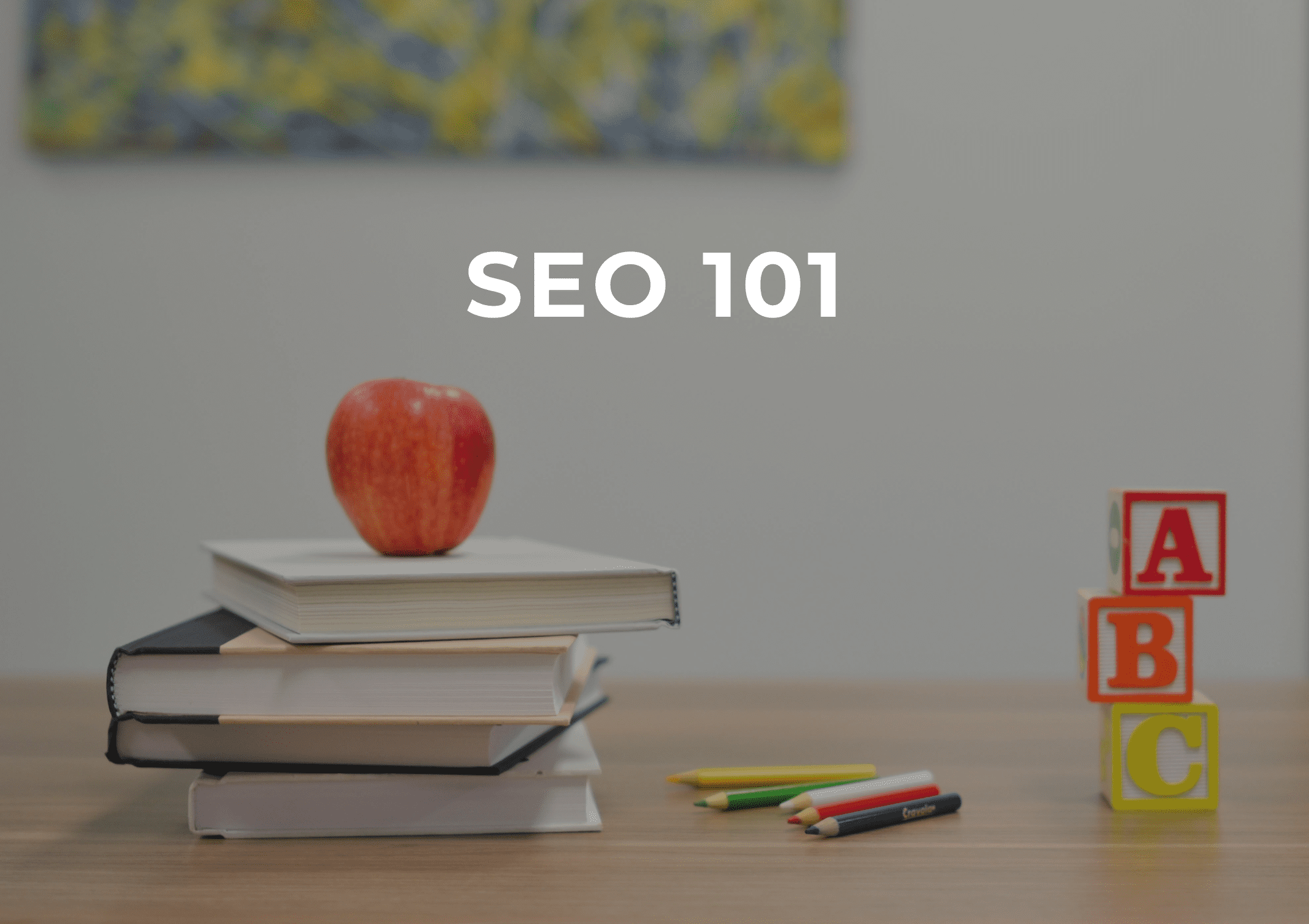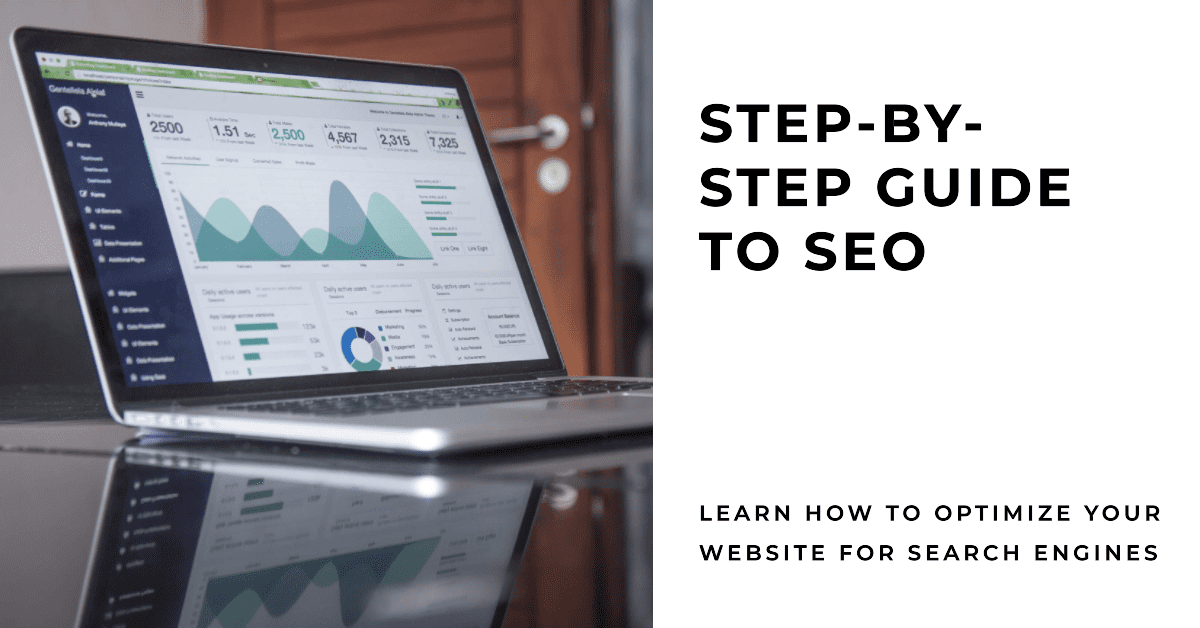SEO 101
SEO can seem daunting at first, especially when you want to hire an agency and they’re quick to charge you close to a thousand dollars a month. The truth is, SEO 101 are not only quite simple to learn, but worth knowing so you don’t fall prey to so called SEO “gurus”.
What is SEO and how it works
What is SEO?
Search Engine Optimization, or SEO, is a practice of configuring a website to help with ranking in search engine results. Doing this correctly will improve the quality and amount of organic (non-paid) traffic to your website, which in turn means more eyes on your business!
How it works
Search engines uses bots (known as website crawlers and spiders) to scan websites for indexing purposes. How your website is indexed and ranked by the search engine is dependent on the variety of information the algorithm looks for in your website. These factors include:
- The 4 main types of SEO
- Keywords
- Content quality
- User engagement
- Backlinks
Why is SEO important to any industry?
According to Search Engine Journal’s blog post on Digital Marketing, organic traffic produces the highest ROI (49%) of any digital marketing channel. This makes SEO one of the most important marketing tactics a business can have.

When almost every business have a website up and running, you want to make sure you tick all the boxes for every tactic you can take to outshine your competitors. Below are the reasons why SEO is important:
-
24H salesperson
- Your website is your 24hour salesperson who doesn’t complain or demand a raise. It’s there to impress potential customers at any time of the day, but it needs the techniques to lead them there.
-
Traffic increases & ROI
-
You spent money on your website to make it look pretty, why not have it generate traffic too? SEO done right will yield very attractive ROI’s: with over 8.5 billion searches per day on Google, you can’t afford to miss out on these prospective clients.
As Jimmy Whales says, “If it isn’t on Google, it doesn’t exist.”
-
You spent money on your website to make it look pretty, why not have it generate traffic too? SEO done right will yield very attractive ROI’s: with over 8.5 billion searches per day on Google, you can’t afford to miss out on these prospective clients.
-
Builds trust with your audience
- Nowadays if you can’t be found on Google, do you even exist? Customers will most likely be skeptical about what you offer if there are no reviews or social proof available to them.
-
Competition
- Don’t fall behind — in this day and age, your biggest competitors are most definitely maximizing their SEO practices to stay ahead.
Google SEO
Google has over 92% global search volume and 8.5 billion searches. As a result, a lot of SEO agencies focus on honing their methods for Google’s algorithms. When building a website you should make sure it follows Google’s guidelines of do’s and don’ts.
Google’s guidelines:
Google loves to shares information about its latest guideline updates via Google’s SEO documents and Google tweets.
What are the basics of SEO?
With so much information online about SEO, it’s easy to get overwhelmed. There’s a book I read when I first started my SEO adventure titled SEO for Growth. It’s a book I highly recommend to to get started on the principles of SEO.
Fundamentally, business owners need to realize the purpose of a website is to convert. A beautiful website is great but if you don’t get clients it’s still a waste of money.
So what are the basics of SEO?
-
On-page Optimization
- Make sure at the very least, your Title, meta description, and URL is optimized.
-
Technical SEO
- In the book SEO for Growth, authors Jantsch & Singleton discuss the low-cost web-builders that are on the market right now, such as Wix, Squarespace, GoDaddy, etc. All of these low-cost web-builders promote cheap templates filled with junk code, which Google isn’t a fan of. That’s why having clean code and proper formatting is crucial to the ranking of your website.
-
Keyword research
- Keyword research is at the heart of any SEO strategy. Finding the relevant and suited keywords for your market will bring the right traffic.
-
Content
- Create relevant content that engages your clients and answers any and all questions they might have. Google likes that!
-
UX or User Experience
-
“Make pages for users, not for search engines.” – Google, 2002
To this day, Google still values content written for your intended human audience and will sniff out keyword stuffing pretty quickly.
-
“Make pages for users, not for search engines.” – Google, 2002
-
Mobile friendliness
- In 2019 53% of web traffic came from mobile users, according to research.com. Google now has a ranking factor just for mobile alone, so be sure your website is optimized for responsive design across all devices.
-
Interlinking
- Interlinking refers to having anchor texts with links to other pages within your website. This not only helps your users navigate your site but allows search engine bots to crawl and index easier.
-
Backlinking
- Backlinking means having external websites linking back to your website. It is very important but if you are just starting out as a business link building may be very difficult to get other brands, companies or agencies to backlink to you. Don’t stress too much — as you slowly work on your business authority, this will come more easily.
If this all sounds a little too overwhelming, don’t fret! There are plenty SEO tools that can help you get started — you can check out my blog post on different types of SEO tools for more info.
What are the 3 C’s of SEO?
There are 3 main aspects to doing SEO properly. Any SEO strategy will revolve around these core principles.
-
Code:
- Your website’s code is very important if you want to rank well. As mentioned above, cheap website builders won’t win Google over as much as clean and proper coding will.
-
Content:
- Content is what Google cares about the most. This includes thee information contained within the content and how you’ve structure it.
-
Credibility
- You need to build authority and trust through backlinks and accurate content.
The 4 types of SEO
There are 4 main types of SEO that can help with your website ranking. 2 of these are extremely important and you have direct control over them: On-page SEO and Technical SEO. Make sure these 2 are optimized very well, especially if the industry you are in is very competitive and saturated.
On-page SEO
On-page SEO refers to:
- Title tags
- Meta Description
- URL Structure
- Content
- Image Optimization
Technical SEO
Technical SEO refers to:
- Coding
- Site Architecture
- Crawlability
- Indexing
- Web Health
- Schema Markups
I have written a more in-depth blog post about the 4 types of SEO to help you get started.
SEO Marketing
SEO marketing is a combination of SEO strategy and marketing to create an effective tactic in increasing a business’ organic traffic. A strong SEO marketing plan should involve:
-
Organic traffic generation:
- Organic traffic refers to non-paid traffic and who doesn’t like free traffic!
-
Quality Content:
- Creating high quality and relevant content that your audience will love
-
UX optimization:
- Focusing on making your website easy for users to navigate
-
Keyword Research:
- Searching for the right keyword to bring in the target audience
SEO marketing is a long-term strategy and thus, if you don’t start out right away you are potentially wasting precious days that could be bringing you many prospects.
SEO Tools
Nowadays are many tools available to help you with your website’s SEO. These tools help you save time and gently guide you through the process ofwebsite optimization. By utilizing an SEO tool when you’re first getting started, you’ll grasp the basic concepts of how to shape your SEO strategy properly.
These are some of my favourite SEO tools:
If you want to know about other SEO tools that I use, you can read my blog on 8 different types of SEO tools.
White hat vs Black hat SEO
Now that you have learned the basics of SEO, let’s talk a bit more in depth about the different tactics you can take to achieving your Google ranking.
There are 2 main different practices to SEO techniques. White Hat and Black Hat SEO. So what’s the difference?
-
White Hat SEO
- White Hat SEO Is a technique that follows the search engine’s rules. This technique is mostly for long term and sustainable growth that provides value to your audience.
-
Black Hat SEO
- Black Hat SEO on the other hand, is a deceptive strategy that “fools” search engines into thinking your website is worth a lot more than it really is. This could be through back link purchases, keyword stuffing, hidden texts, etc. Beware of using such techniques, as search engines will seriously penalize your website for dong so.
It’s safe to say you must be careful when choosing a SEO expert. SEO techniques that try to take shortcuts can potentially run your business to the ground — it’s just not worth it.
Where to begin with SEO?
I always tell my client that the first step to SEO is understanding your target audience. Creating a profile sketch of your target audience is a great exercise to help you. Write out a Client Persona that includes the following characteristics of your ideal client:
- Age
- Gender
- Ethnicity
- Hobbies
- Locations
- Occupation
- Annual Income
The deeper you can dive into your target audience the better, so feel free to ask yourself questions and add more characteristics.
Why I recommend doing this exercise? A big component of SEO is keyword research. If you sell laptops, you don’t want to just target one keyword like “laptops”. Instead, you’ll want to answer all the questions your audience would ask such as “best laptops for studying” or “cheapest laptops” or “laptops for gaming”. Who is your client and what are their wants and needs? The more questions you can answer, the better your website ranking will do in the long term.
Which leads me to the next part.
How to research keywords?
A lot of agencies will tell you the same thing: to find high search volume, low SEO difficulty and high CPC (cost per click). Easy right? But after 6 months your website might still be doing poorly, unable to rank on the first page.
The truth is, those agencies are kind of right but also kind of wrong at the same time. Yes, the ideal environment is one with a non-competitive industry with high search volume, low SEO difficulty and high CPC. But that’s not real! So how do you combat this? There’s not really a shortcut, but the method I’ll show you will work in any industry, competitive or not.
Let’s start with the first step:
-
How do you know which keyword you should rank for?
- First, I do this by analyzing my competitors. I look at what they put as their H1 tag, then H2, H3, so on and so forth. For example:
Vancouver SEO Agency
Welcome to Rarieva, we are a Vancouver SEO Agency based in Richmond. We provide SEO services to businesses of any size in any industry. We also provide Richmond SEO services and all across Canada. Rarieva provides the best SEO service in all of Canada with extensive experience and proven SEO strategy.
As you can see with the example above, all the italicized phrases are keywords and its variations. Now I have an idea of what keywords are relevant for me.
Secondly, the internet is a vast place — you can find potential keywords by digging into the platforms and pages relevant to your industry or market. Examples include:
- Forums
- Wikipedia
- Google searches
- Quora
- Amazon Reviews
-
Keyword research
- So now that you have a list of keywords you want to rank for, you’ll need to do the actual keyword research. Go onto the SEO tool you have chosen and type in one of your keywords to determine the search volume, SEO difficulty, and CPC. Search for the ones that have high search volume and ignore the rest for now.
- Then, look at the keyword variants, including ones that have low search volume and low difficulty. What most people don’t mention is even if the volume is 20, that’s still volume. It’s difficult to rank for a keyword that’s high in both volume and difficulty but it’s quite easy to rank for a keyword that’s low in volume and difficulty. The real difference between your website that’s not ranking well and a website that is ranking high is just domain authority. You want to establish that first by ranking for keywords with low volume, before you try to compete with the big dudes.
-
Keyword variants
- Searching for the main keyword is important but you don’t want to cover just one topic. You don’t want to dangle a single fishing line in hopes that you can catch a fish. Instead, drop a net and cover a bigger area. Think big! If you’re stuck, this is where your client persona will come in handy.
- Since you now know type of keywords your competitors are trying to rank for, you can also extract relevant keywords. What’s great is that with keyword variations you now have a handful of topics to write your content about.
-
Topic Research
- Another way of doing keyword research and finding topic to write about is setting up in Google Analytics. From there you can have it linked to your website and have a report set up that captures “Search Terms”. These search terms are what your audience is looking up if you have a search bar set up. This is another way to keep your audience engaged with the right content.
And there you have it! I hope this SEO 101 guide helps you on your exciting journey to optimizing your website for stellar ranking.



